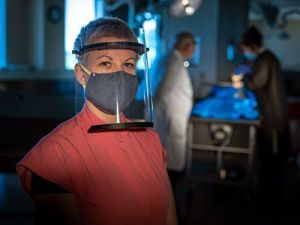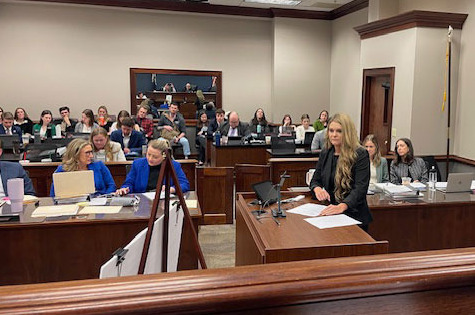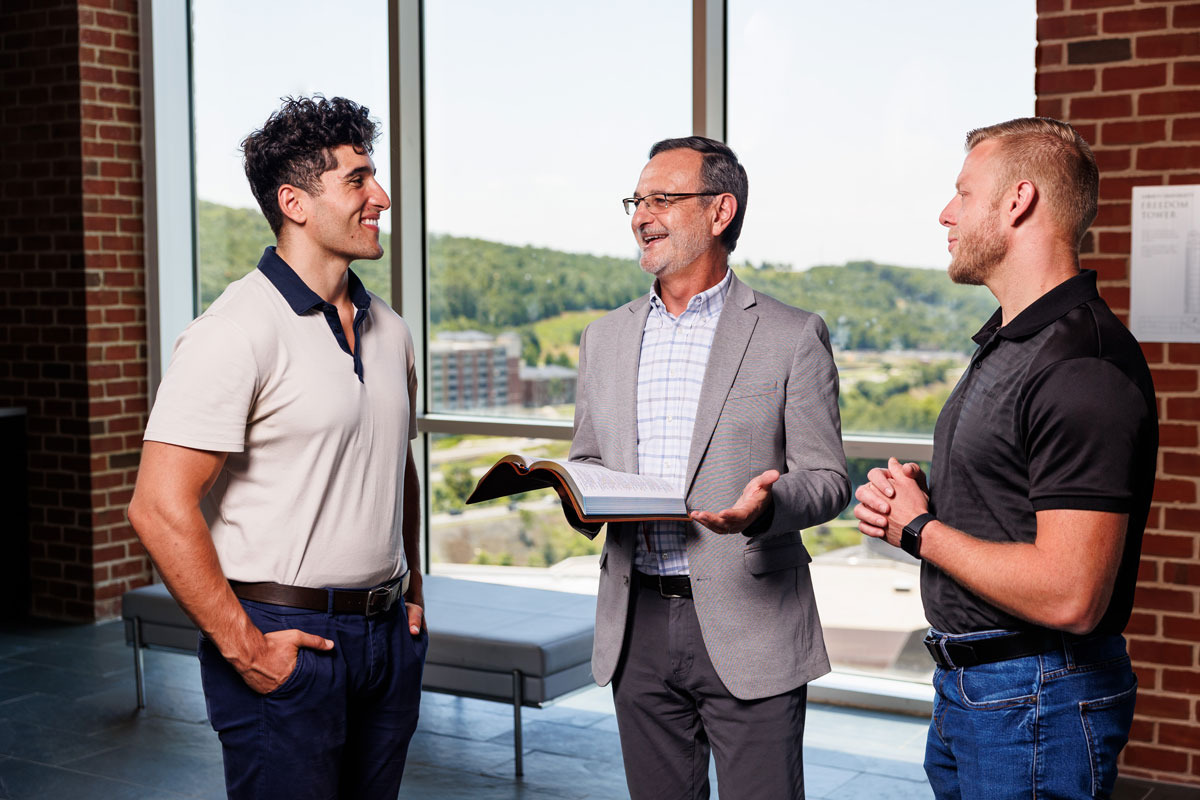Search News Archives
Filter News Articles
Additional Navigation
Engineering students use 3D printing technology to produce custom face shields for medical students
July 31, 2020 : By Office of Communications & Public Engagement

Through a unique partnership between the Liberty University College of Osteopathic Medicine (LUCOM), the School of Engineering, and the Center for Engineering Research & Education (CERE), over 300 custom-made face shields were recently delivered to Liberty’s student-doctors.
The shields, designed by engineering students, were manufactured using the 3D printers and other high-tech equipment housed at CERE.
During the early stages of the COVID-19 pandemic, Dr. Raena Pettitt, chair of the LUCOM department of family medicine, had been in conversations with LUCOM Dean Peter Bell regarding the need for personal protective equipment (PPE) for student-doctors, both for protection from COVID-19 and for use during their labs. In the meantime, School of Engineering Dean Mark Horstemeyer had been working with students to develop a prototype face shield believing the demand for PPE would increase as the coronavirus spread.

“I contacted Dean Horstemeyer and he put me in touch with his team,” said Pettitt. “They were already working on prototypes and brought them to LUCOM for me to see. We made a few suggestions regarding ease of cleaning, and they had great ideas regarding comfort and functionality.
Engineering junior Patrick DaCosta and sophomore Josh Ingram worked with graduate student Tate Fonville to translate the specifications provided by LUCOM into a face shield with a headband, plastic facial screen, and a bottom stabilizing bracket, which is especially useful for student-doctors in anatomy and cadaver labs.
“LUCOM needed a shield to protect student-doctors from something that could splatter up over the head and run down the forehead,” said DaCosta. “In the original design, the curvature of the headband piece was too rigid, so I took measurements of average head sizes and adjusted the design so the headband would create that protective enclosure.”

Ingram said much of his time and effort was spent finalizing the design and preparing the 3D printer and high-pressure water jet to manufacture the shield components. “Our main purpose this summer was to get the machines optimized so we would be able to plug designs into the machines and have them run efficiently.”
The students used a total of six 3D printers running concurrently for 24 hours a day for over a month to print the components. Ingram said it took eight to nine hours to print three of the face shield frames. The printers were able to manufacture 68 of the bottom braces in 24 hours, printing 14 of them at a time.
“The machines print 0.2 millimeters per layer, which is why it takes so much time to produce each piece,” said Ingram. “To ensure the production was constant and that we kept the project on schedule, Patrick and I would take turns coming to CERE after-hours — at night, early in the morning — to remove the completed pieces and restart the printers for a new batch.”
The plastic face shields were cut from large sheets of plastic using the high-pressure water jet and, once the pieces were all manufactured, the two spent the last days of the project piecing the shields together and getting them ready for delivery to LUCOM.

“LUCOM came to us because they did not find anything on the market that fit their specific needs,” said DaCosta. “They came to us to get it done, and because of the shortage of PPE equipment around the country, we were able to produce the shields in a more timely manner than if we had waited to purchase them.”
“The face shields are incredible,” Pettitt said upon receiving them at the Center for Medical and Health Sciences on Friday. “As this pandemic continues to unfold, and the needs of students, faculty, and staff change, these shields will provide protection in ways that we may not be able to predict.”
“The opportunities that CERE presents not just for engineering students, but Liberty University as a whole, are exciting,” said Dean Horstemeyer. “The face shield project is a perfect example of our Creationeering paradigm where science and engineering combine into tangible God-focused outcomes that benefit society.
Now that the face shield project is complete, Ingram and DaCosta, who are both student workers through the School of Engineering, are looking forward to what the future holds.

“We’ve become like the machine gurus and we will be training other students on how to use them,” DaCosta said. “At some point in the future, we hope LUCOM comes to us with the request to design and manufacture medical products like a bone implant or a prosthetic product that would be designed in partnership with LUCOM and School of Engineering and printed on the machines here at CERE.”
Dr. Richard Diddams, executive director at CERE, said the face shield is the first product that has resulted from the partnership between CERE and LUCOM, and he is optimistic about what future opportunities await.
“Industries are very excited about working with LU students because of their tremendous work ethic. The students often provide some very insightful input during the design and manufacturing process,” he said. “It is very rewarding that we can help to develop not only the educational experiences of our students, but also provide valuable skill sets they will need to secure a job after graduation.”


